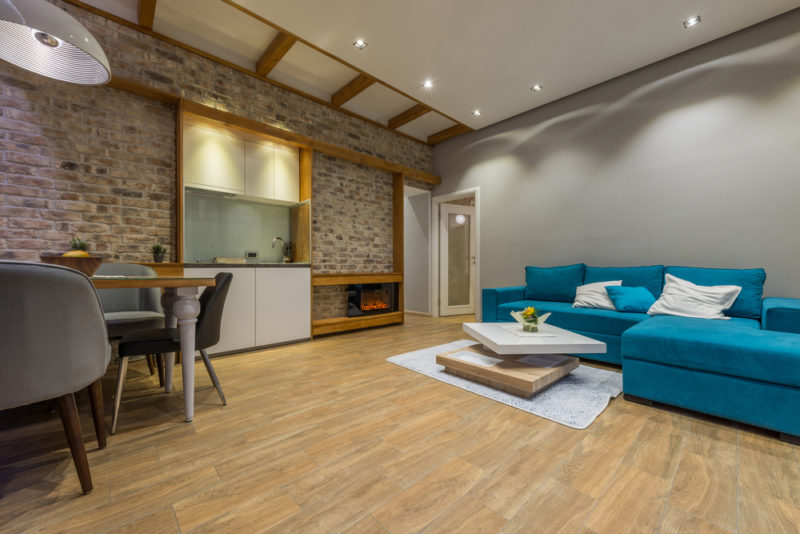When my husband and I bought our home in Tulsa a few years back, one of the first things we had to figure out was what type of material to put on the floors. I had been raised in a home with mostly hardwood floors, and I loved how good they looked and how delicious they felt underfoot. My husband had been raised in an apartment that had wall to wall carpet throughout all the rooms but the bathroom and the kitchen, which had laminate flooring. (We didn’t even consider what was on the floors of the dumps we’d lived in as singletons). We ruled out carpeting, but we did consider laminate floors as well as hardwood. What’s the difference between them?
Hardwood Flooring
Hardwood flooring is made from the timber of deciduous trees such as hickory, oak, maple and ash. Hardwood flooring is not necessarily harder than softwood flooring, but tends to be denser. This means hardwood doesn’t dent and ding as easily as softwood and is less porous. Softwood mostly comes from conifers, though beech, a deciduous tree, is sometimes thought of as a softwood.
Hardwood comes in strips that are 2 1/4 to 3 inches wide, and planks start at about 3 inches wide. Some people use different sized boards when they choose a hardwood plank floor, which is what my husband and I did for our kitchen. Our floor is made of oak, which is by far the most popular type of hardwood flooring and goes well with our kitchen’s rustic style. If you’re wondering how you can have a wooden floor in the kitchen with its heat and humidity, the answer is you need a good finish. A good polyurethane finish will protect a hardwood floor for years.
Hardwood floors can be solid or engineered. Solid means it is one type of wood all the way through, while engineered wood has a layer of high quality wood on top and layers of pressure glued, inferior wood or plywood below. The thicker the engineered wood, the better it is. It also saves lots of money if you are interested in an exotic wood such as mahogany for your floor.
Laminate Flooring
We have laminate floors in our bathrooms of our Tulsa house. Basically, they’re like your laminate countertops but are much tougher and more durable. On top there’s a transparent resin wear layer to bear up under traffic and spills; the design layer which can resemble everything from wood to tile to brick and stone; the core layer of resin and fiberboard and a base of paper or melamine. Durability and the great wealth of patterns and textures was why we choose laminate for our bathrooms. You can find laminate flooring that complements even the funkiest bathroom.
Laminate floors come in planks and tiles and cost about the same as hardwood floors. They come with tongue and grooves that snap together, and my husband and I did our bathrooms ourselves over the course of two weekends.
Besides the endless patterns and colors a laminate floor can come in, they also resist scratching, stains and warping. Best of all, they resist fading from the sun’s ultraviolet light. This was a real selling point since we have a southern window in our master bathroom. Of course, the wear layer is water resistant.
The hubster and I are pleased to enjoy the best of both worlds of hardwood and laminate floors in our new house!
Christina is an author and blogger who is passionate about home improvements projects. Making time to help family and friends while working with Brucke Flooring.

